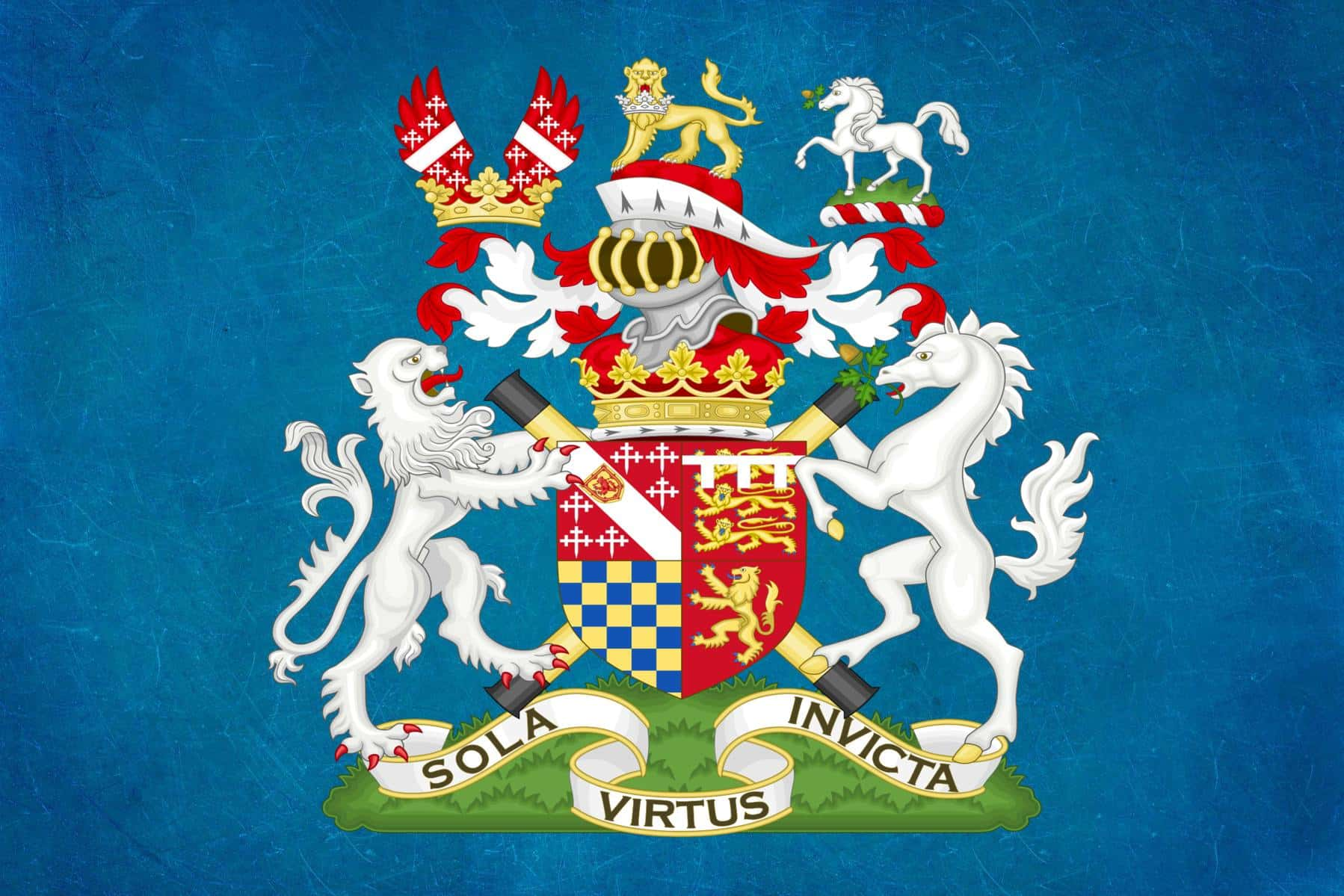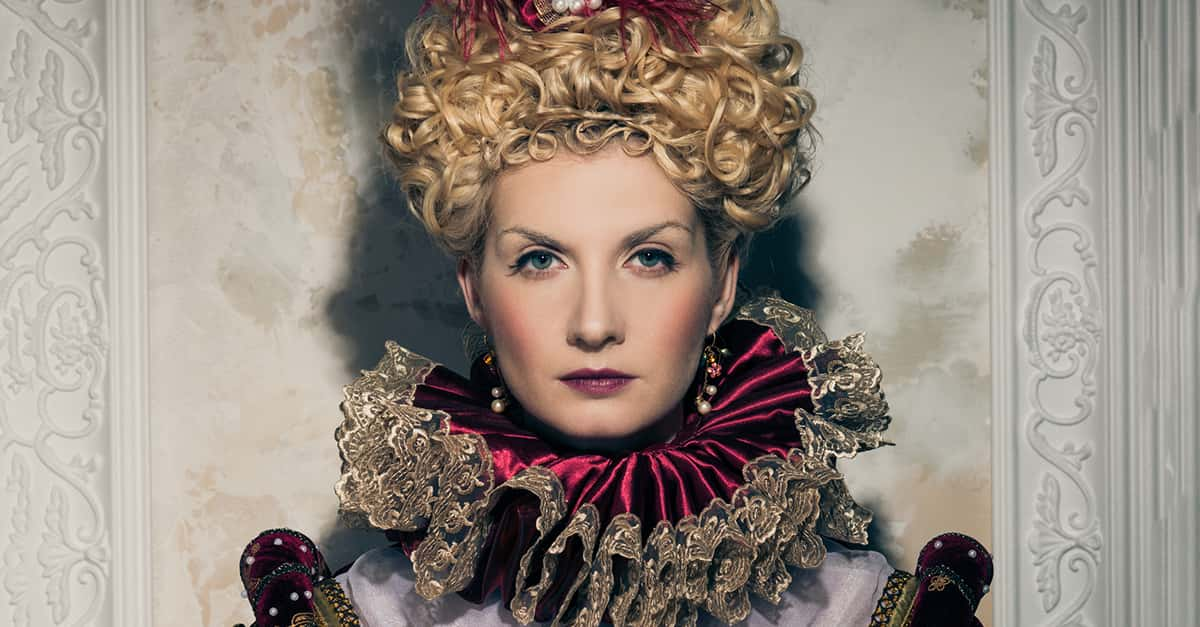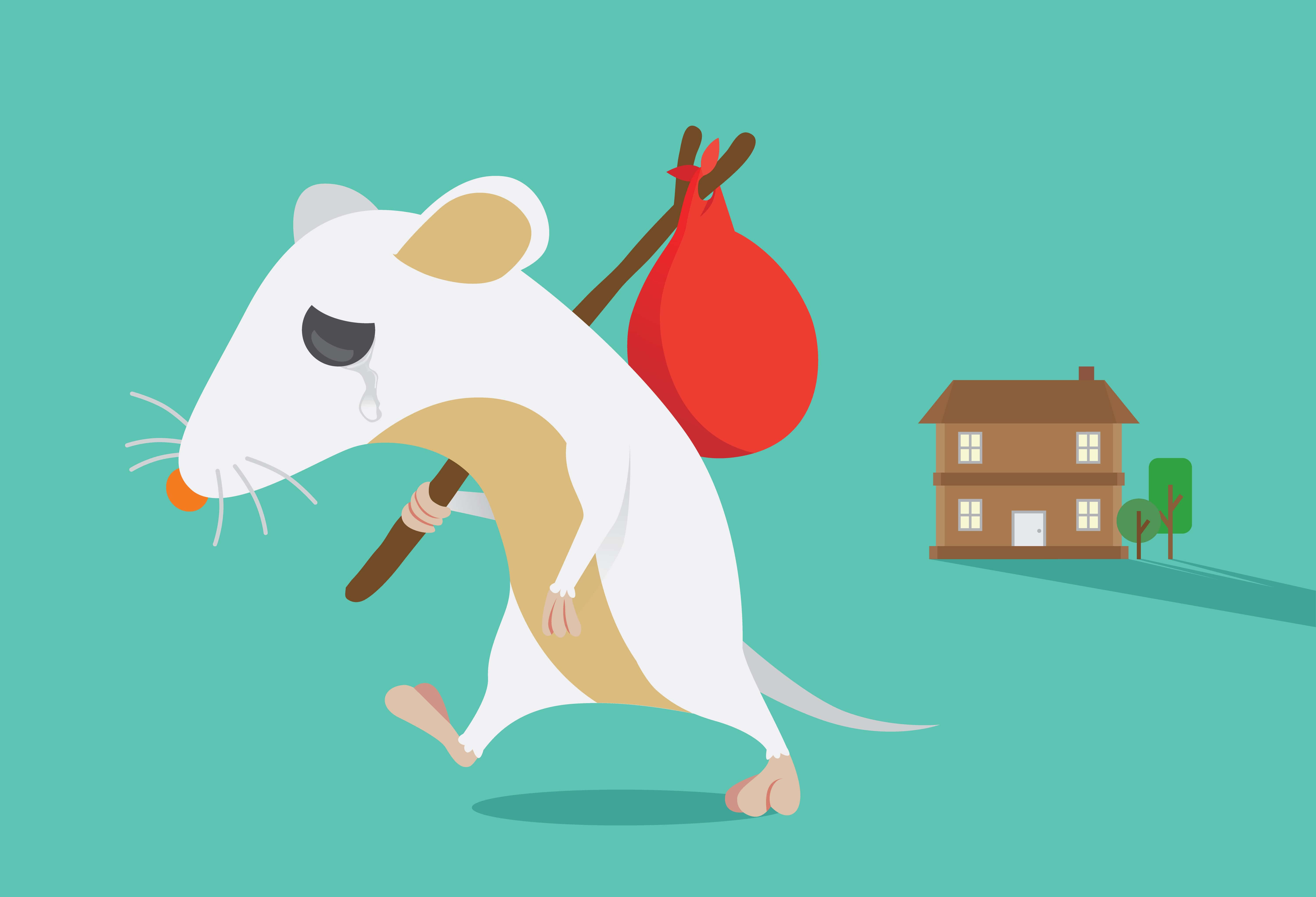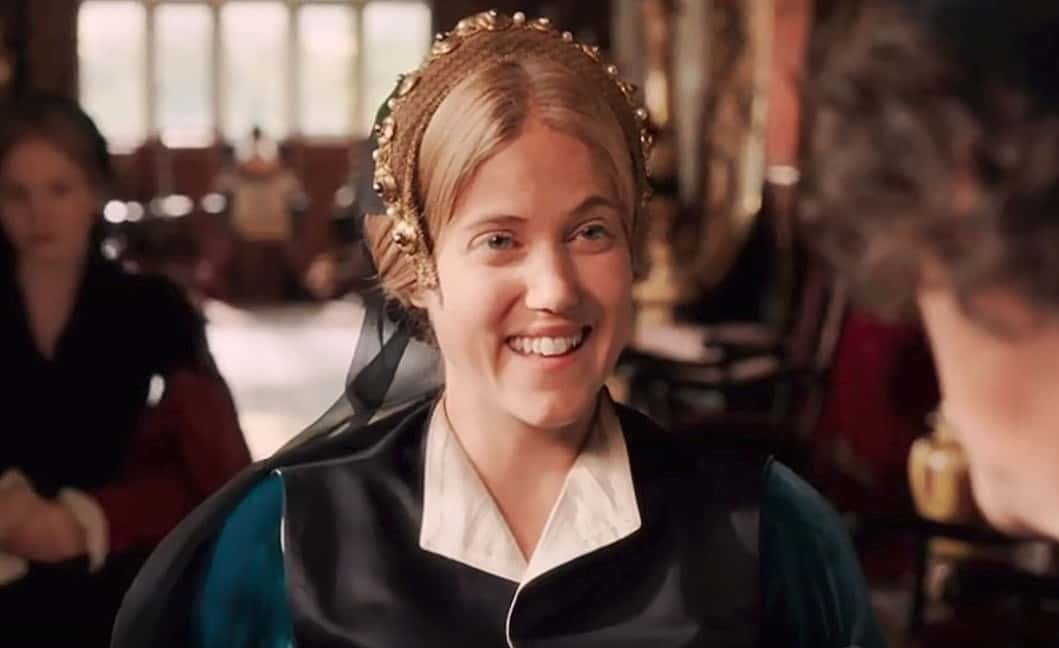One historian famously declared that all we know for certain about Mary Boleyn could barely fill up a postcard. Truly, the “Other Boleyn Girl” will go down in history for her relation to bigger names in Tudor England. She was the sister of Anne Boleyn, the aunt of Elizabeth, and one of only two publicly acknowledged mistresses to Henry VIII. Nevertheless, she manages to capture the historical imagination for her close and intimate brushes with fame. Thanks to historical fiction and interested Tudor fans, the legend of Mary Boleyn has grown to sordid prominence.
How exactly did Mary “snare” a king? What scandalous act did she commit to earn her famous exile? Was she really so “promiscuous"? Unlace that bodice to 42 revealing facts about Mary Boleyn, the infamous Other Boleyn Girl.
41. What’s Your Number?
Mary is probably the oldest of her parents’ kids… although we can never be sure. In fact, all the birthdays for Thomas Boleyn and Elizabeth Howard’s brood remain a heated historical question. For the sake of simplicity, however, historians generally believe she was born somewhere between 1499 and 1508, with 1499 or 1500 being the most likely dates. With a 10-year window, this puts how “experienced” she was into question at many stages in her career.
40. You’ll See Success Down the Line
Diana Spencer, Princess of Wales, was a descendant of Mary Boleyn. Obviously, this means Prince Harry and Prince William are also descended from the famous mistress. Congrats on getting your bloodline into to the royal family, Mary!
39. Beat You to the Aisle
Historians generally agree Mary was the older sister based on the fact that she was married first. In 1520, she made her first match to William Carey, a courtier in the king’s household.
 The Other Boleyn Girl, Focus Features
The Other Boleyn Girl, Focus Features
38. In Daddy’s Top Two
Most likely raised at Hever Castle at Kent with her siblings, Mary was given the education in literacy and charm that befits the daughter of a career courtier family. However, it was Anne—not Mary—whom their father gave the honor of completing her education at the esteemed court of Margaret of Austria. Either Thomas favored Anne over Mary, or simply thought that the former would get more out of the foreign networking opportunity.
 The Other Boleyn Girl, Focus Features
The Other Boleyn Girl, Focus Features
37. Happy to Be of Service
In 1514, Mary was selected to accompany Princess Mary of England to France as a maid of honor for the young bride’s new household. This royal Mary, sister to Boleyn's future lover Henry VIII, was to marry the French king. Boleyn, now aged about 15 (we believe), would be joined by her sister Anne in Paris.
36. Twice the Mistress?
It’s rumored that Mary had many affairs in France, where she was also a mistress to King Francis I; the French king allegedly called Mary his “English Mare” and “Hackney.” While fiction writers have taken Mary’s “lewd” reputation for granted, many historians are starting to doubt its accuracy. For one, the primary purveyors of this “fact” had huge biases against the Boleyn party, and they also believed that her sister Anne had six fingers on each hand, a projecting tooth, and embarked on countless affairs that got her “banished” to France. Maybe not your best source for intimate info.
35. Saved from Downsizing
Most of Queen Mary of France’s English attendants were sent away after a few weeks to make room for loyal French ones. However, Mary Boleyn’s dad happened to be the new English ambassador to France; Thomas Boleyn’s new position might be why both Mary and Anne were able to stay, even after the widowed Queen Mary returned to England. At that point, the Boleyn girls served the new queen, Claude of France.
34. Trouble From the Pews
Henry VIII was a guest at Mary’s first wedding to William Carey. His Majesty even gave the couple a handsome financial gift.

33. She’s Got the Blue Blood
The Boleyns were not “upstarts” to the aristocracy. On her mother’s side, Mary drew blood from the Dukes of Norfolk; her great-grandfather died while fighting on the side of Richard III (the wrong side to be on, by the way, which is why the men of the family were briefly demoted to Earls by Henry VII).

32. Mystery Daddy
Some people believe that Mary’s two children from her first marriage were fathered by Henry VIII. Her oldest child, Catherine, was even said to look like the king. Henry never acknowledged them, so until we send DNA tests back in time, there is nothing to substantiate the theory.
 The Other Boleyn Girl, Focus Features
The Other Boleyn Girl, Focus Features
31. The Woman With No Face
There is a popular idea that Mary was the “fairer” of the two Boleyn sisters, promoted by historical fiction such as The Other Boleyn Girl. However, there is no surviving portrait or even written account to confirm what Mary looked like at all.
 The Other Boleyn Girl, Focus Features
The Other Boleyn Girl, Focus Features
30. That’s Like Comparing Apples to Hotter Oranges
The assumption that Mary was the prettier Boleyn sister most likely transpired from a misinterpreted conversation between Thomas Boleyn’s chaplain, John Barlow, and an Imperial council member. The council member asked whether the king’s new woman (Anne Boleyn) was “worth leaving his wife for.” Barlow ends his reply with “the other lady more beautiful still,” which led people to believe he was referring to Mary, the king’s previous mistress and Anne’s sister, as the “hotter” one.
In truth, it was the king’s even earlier mistress, Bessie Blount, who beat Anne in this little beauty contest—not Mary. The men were talking about Anne in relation to “the mother of the king’s son,” not her sister. Either way, they’re being pretty hard on Anne.
29. Flying the Nest
Mary’s husband William Carey died of the great sweating sickness outbreak that hit England in 1528. Although Carey was a successful and wealthy courtier, he left behind considerable debts. This may have contributed to Anne Boleyn taking wardship of Mary’s son Henry and securing his education at a respectable monastery.
 The Other Boleyn Girl, Focus Features
The Other Boleyn Girl, Focus Features
28. Getting Her Due
Thomas Boleyn offered little financial support to Mary in the wake of her widowhood. It took her sister Anne’s intervention to secure Mary a very handsome widow’s pension of £100 a year.
27. By Your Side
Mary was one of Anne Boleyn’s attending ladies-in-waiting at the former’s coronation on 1 June 1533. If her sister marrying her ex-lover made Mary feel awkward at all, she never showed it.
 The Other Boleyn Girl, Focus Features
The Other Boleyn Girl, Focus Features
26. Taking a Step Down
In 1534, the widowed Mary found love again. She eloped with William Stafford, a solider from the noble Stafford dynasty. However, he was a younger son from a lower branch. In other words, Stafford wasn’t rich or prestigious enough to openly be with a king’s sister-in-law.
25. It’s Us or Him
Mary Boleyn and William Stafford kept their marriage on the down-low for some time. It became harder to be discrete when Mary became pregnant. Naturally, her family was furious, and the newlyweds were banished from court.
24. Worth Taking a Pay Cut?
From what we can tell, Mary had no regrets about “stooping” for William Stafford at the expense of her allowance. Even as Mary begged for Thomas Cromwell, the king's advisor (and ancestor to Oliver Cromwell) to intercede with Anne and the King on her behalf, she stood by her man and wrote "I had rather beg my bread with him than to be the greatest queen in Christendom. And I believe verily... he would not forsake me to be a king." Was this a pointed stab at her sister’s choices?
 The Other Boleyn Girl, Focus Features
The Other Boleyn Girl, Focus Features
23. Can’t He Just Be a Bro?
During his wife’s affair with Henry VIII, William Carey was on the receiving end of several prestigious land grants and favors. To be perfectly fair, this favor might also be because Carey held the prestigious position of Esquire of the Body to the King and seemed to be very well-liked by his Majesty for their shared talent for jousting and hunting.
22. He Has a Type?
By the early 1530s, Henry might have conducted an affair with another relative of Mary and Anne’s. The alleged other “other” woman was either Mary Shelton or her sister Madge, both cousins to the Boleyn family. If it seems like Henry isn’t casting a wide net, I’ll put in that aristocratic families were very tightly bred, so the dating pool was very shallow.
21. Take Two?
With her second husband William Stafford, Mary also had two children, Edward and Anne (maybe named in honor of the sister who spared some generosity to her plight). However, the fate of these children remains mostly lost to history.
20. Taking up the Petticoat
While Mary never came back to court after her exile, her daughter Catherine had an illustrious career as a professional lady-in-waiting to future Tudor queens. While the awkward execution of Anne Boleyn in 1536 might have put a damper on her prospects, Catherine managed to become a maid of honor to Henry’s fourth and fifth queens, Anne of Cleves and Catherine Howard. She was also a close friend and chief lady of the bedchamber to her maternal cousin, Elizabeth I of England.
19. It's In The Genes
Through her daughter Catherine Carey, Mary Boleyn is the grandmother of Lettice Knollys, a lady-in-waiting to Elizabeth I who was exiled by the queen for eloping with Her Majesty’s something-more-than-a-friend, Robert Dudley. Scandal runs in the family.
18. Better Earlier Than Never
For most of Mary’s life, her father Thomas Boleyn fought with their Irish relatives over the rights to the title of Earl of Ormonde. Long after Mary’s death, Elizabeth I would finally grant the title to Mary’s son, Henry Carey. Of course, this was on Carey’s deathbed. Using the classically dry Boleyn wit, Carey told his royal cousin, “Madam, as you did not count me worthy of this honor in life, then I shall account myself not worthy of it in death.”
17. At Least She Made Them Count
None of the Boleyn children lived very long lives. Mary died on 19 July 1543, aged only in her early 40s.
16. A Quiet Epilogue
Mary spent her last years with her second husband on their Staffordshire lands. With little income, we don’t know if it was comfortable living. But with little information about Mary’s post-court life overall, maybe we can take silence to mean peace?
15. From the Closet to the Bank
To pay off her widow’s debts, Mary pawned her own jewelry. It still wasn’t enough.
14. Kill Them With Kindness
Anne Boleyn’s debut at the English court took place at a 1522 masque, where ladies played “virtues” and men played "vices." The future queen famously played “Perseverance” (how prophetic of her seven-year wait for the throne) and her sister Mary was there too; she played “Kindness.”
13. Last of Kin
In a bleak twist of luck, her sister and brother’s execution for treason improved Mary’s prospects. Both Boleyn parents died within two years of their children’s disgrace. As her parents’ only surviving child (for the aforementioned reasons), Mary inherited a sizable chunk of their lands, which helped ease their financial burden… but at what cost?
12. Inheriting Scandal
Mary’s great-grandson would meet a similar fate to Mary’s more famous sister. Robert Devereux was Mary’s great-grandson by Lettice Knollys (who, like Mary, was disgraced from court for eloping). Devereaux rose to be a young favorite of the now-elderly Elizabeth I. Unfortunately, he overplayed his maybe-more-than-a-cousin’s favor and launched a rebellion that ended with his beheading for treason in 1601. Guys, not everything needs to run in the family.
11. A Helping Hand from Hank
While her 10-year-old son Henry Carey was being educated by monks, some of them believed their pupil was, in fact, the illegitimate son of Henry VIII. The King continued to support Henry financially after his legal father’s death, adding some weight to that theory.

10. Three’s a Crowd
Like all of Henry’s acknowledged lovers (and sometimes future queens), Mary served as a lady-in-waiting to a former Queen. She had been in the service of his first wife, Catherine of Aragon, since 1519.

9. By the Scruff of His Neck
Needlework was a standard part of any noblewoman’s education, and Mary was no exception. In 1533, she made a New Year’s gift of a blackwork collar, crafted by her own hand, to Henry VIII (don’t let your mind drift from “collars” to something dirty; this is well after the affair ended).
8. Wearing His Heart on His Metal Sleeve
Unlike his marriage to Anne Boleyn, the affair between Henry VIII and Mary Boleyn is not known for its grand material gestures. However, some people believed the king’s armor at a 1522 Shrovetide Joust was a shout-out to his fling with Mary. The king rode out on a horse while wearing the noble motto, “elle mon Coeur a navera,” which means “She has wounded by heart.” The timing leads some people to speculate this motto was a wink at his latest sweetheart.
7. One in the Oven and One to Go
It’s generally agreed that, no matter how long or little it lasted, Mary’s affair with Henry had run its course by 1525. After all, she was pregnant with her second child and Henry would be courting her sister Anne within a very short time frame.
6. The Case of the Two Faces
With no surviving portraits of either Boleyn sisters, Mary and Anne sometimes “share” presumed images. For example, a miniature by Lucas Horenbout in 1525 was believed to portray Anne Boleyn for years until one scholar used the age and dress of the model to suggest she was, in fact, Mary. See, this is why we tag selfies now.
5. Show Me the Body
Fittingly for a woman whose life is a walking question mark, there is no confirmed place of burial or even place of death for Mary Boleyn. I mean, at least we know what happened to her sister, right?
4. Sisters Are Worth More Than Gold
After her scandalous marriage, Mary was shunned by not just the king but also her father, uncle, and brother. It was only her sister, Queen Anne, who showed some sympathy and sent Mary a golden cup and some money to alleviate her financial problems. However, Anne still refused to see Mary in person. It’s most likely the sisters never saw each other again.
3. Too Many Questions
Almost everything about King Henry’s affair with Mary Boleyn is unknown. Was it a passionate multi-year affair? A one-night stand? Historians have argued for both! That the affair happened is the only sure thing.
When Henry sought to marry Mary's sister years later, he sought a potential dispensation from the Pope to still marry Anne even in the event that he had previous carnal relations with her close relative “in the first degree of affinity,” i.e. a sister. When he annulled the marriage to Anne in 1536, it was generally accepted he used the very same “had relations with your sister” impediment to dissolve the union. Who's to stop a king from being a hypocrite?
 The Other Boleyn Girl, Focus Features
The Other Boleyn Girl, Focus Features
2. Witchcraft and Treason
Mary's sister Anne Boleyn was brought to the scaffold to die in May 1536, and it was a tragic day for the whole Boleyn clan. Anne was accused of adultery with multiple men (including her brother), and of plotting to murder the king and her lovers so she could marry Henry Norris. Modern historians agree that the charges brought against Boleyn (and the rest of her family) that led to her execution were false and unconvincing, and that Henry had her killed likely because she didn't happen to have any male children.
Before her execution, Boleyn begged leave to address the crown and was granted the right to do so. Despite the limited evidence against her, she said, “Good Christian people, I am come hither to die, for according to the law, and by the law, I am judged to die, and therefore I will speak nothing against it." As she awaited the executioner’s blade, kneeling on the block, she repeated the phrase, “To Jesus Christ I commend my soul; Lord Jesus receive my soul.”
1. Kiss and Tell
Like her daughter, Mary’s mother would be haunted in life by rumors of promiscuity. During his lifetime, rumors endured that Henry had once slept with Mary and Anne Boleyn’s mother, Elizabeth Howard. Someone actually asked the king about his preference for Boleyn women, to which he clarified, “Never with the mother.” By this omission, he essentially verified his affair with Mary.
In addition to the accusations she slept with her royal son-in-law, Elizabeth Howard was the subject of a 1495 John Skelton poem titled, “To My Lady Elizabeth Howard.” It sounds nice until you know she is compared to Cressida, the romantic traitor to Troilus. Boleyn ladies can’t catch a break.
Sources: 1, 2, 3, 4, 5, 6, 7, 8, 9, 10, 11, 12, 13, 14, 15, 16, 17, 18






































